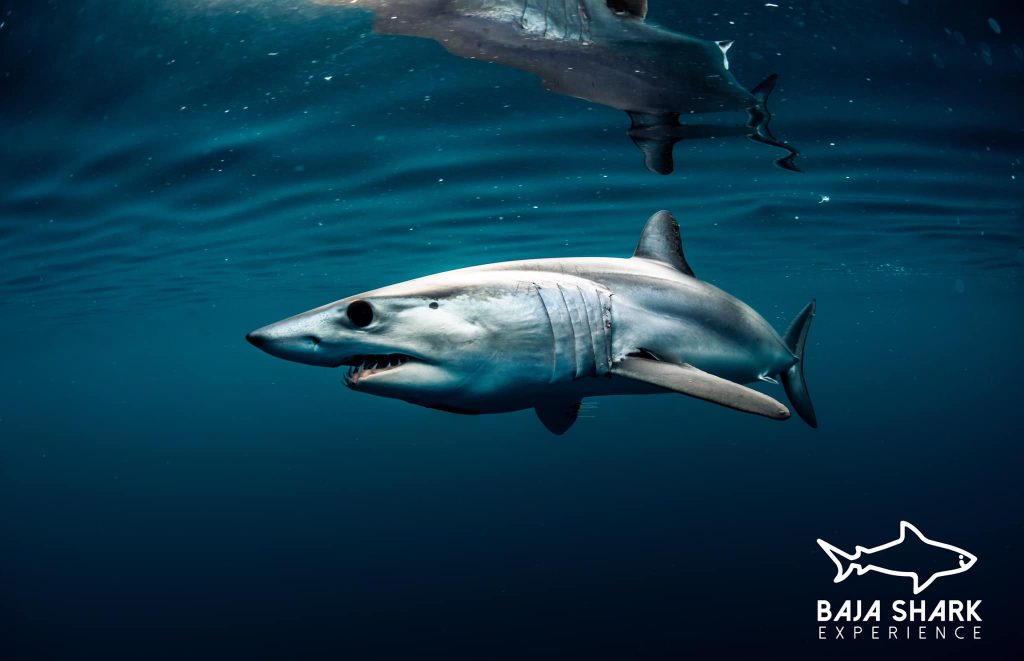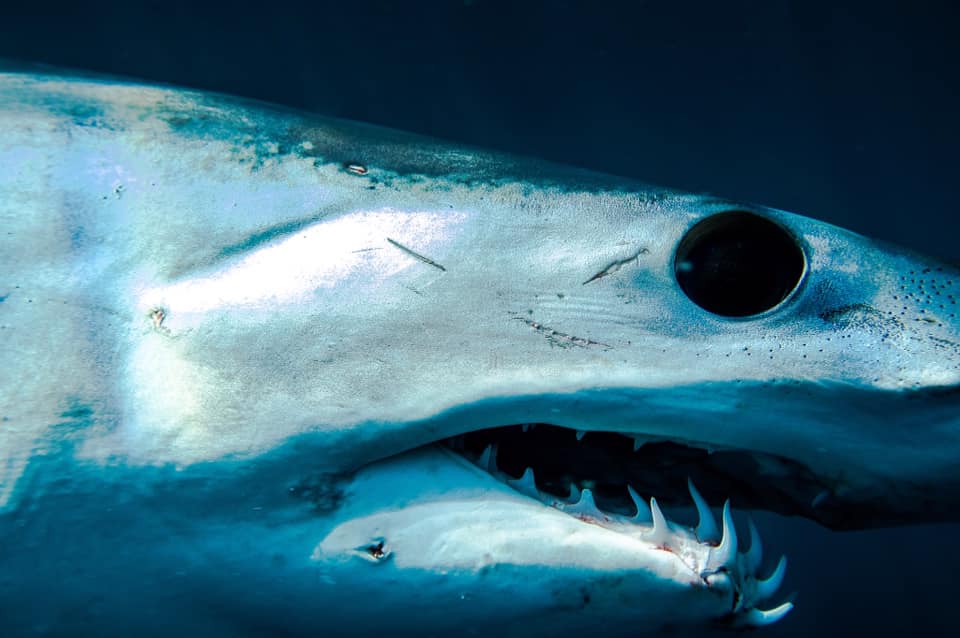Fastest shark in the world

The Mako Shark holds the title as the fastest shark in the world. If there’s a shark race, the Mako will have no problem outswimming the other species. With its muscular streamlined body shaped like a torpedo, the Mako is the ultimate speedster. It can swim at 40 kph (25 mph), with speed bursts of up to 74 kph (46 mph). This kind of acceleration enables it to leap to heights of around 30 ft (9 m). This impressive aerial antic is known as breaching.
With their natural gift of speed, they can reach as far as 1,299 miles (2,092 km) in a little over a month. Mako Sharks are often found in tropical and temperate waters in different parts of the world including Mexico.
Role as apex predators
The Mako sharks sit on top of the food chain. Since they do not have predators within their ecosystem, they are free to roam the waters. If it weren’t for humans, shortfins have nothing to fear in their territory.
As apex predators, they help control the population of their prey. Thus, preventing one species from devouring limited resources.
Shortfin Mako Shark

Physical attributes
Shortfin Mako Sharks are a member of the mackerel family or Lamnidae. They are closely related to porbeagles, salmon sharks, and the great white sharks. Shortfin Makos are solidly built and have slender, elongated bodies. They are considered medium-length sharks that can grow more than 9 ft. These predators have large black eyes, pointed snouts, and crescent-shaped caudal fin (tail).
They may appear menacing because they love to swim with their mouths open, showcasing their sharp teeth. Their dagger-like teeth are so extreme that they protrude even when the shark’s mouth is shut.
Shortfin makos have very distinct coloration that sets them apart from other sharks. Dorsal coloration ranges from deep purple hues to bright indigo blues. Their sides are usually silver and their ventral areas are white. The parts under the snout and around the mouth are also white.
As their name implies, these species have very short fins. Its second dorsal fin is considerably shorter than the first.
Hunting behavior
These sleek marine predators are anatomically engineered to hunt for fast species of fish like tuna and Sailfish. With ultra-sharp teeth, they have the ability to impale and grasp fast-moving prey in the deep blue. They also love to hunt herring, mackerel, sea bass, bonito, cod, and squid. Their diet may also include occasional dolphins, porpoises, blue sharks, and sea turtles. Shortfin makos can tackle a large fish like a swordfish and some of them have tell-tale battle scars.
Longfin Mako Sharks
The Longfin Mako is a less common and poorly known species relative to the Shortfin Mako. It is presently listed as Vulnerable on IUCN’s Red List of Threatened species.
Physical attributes
The Longfin Mako is very similar to the shortfin mako but this species may grow slightly longer (over 4 meters). It is the second-biggest Lamnidae shark next to the great white shark. A full-grown great white can measure up to 19.6 feet while the Longfin Mako can reach the length of 14 feet.
Longfin Makos have a dusky coloration. These species have a slimmer built and naturally endowed with longer and broader pectoral fins. They are said to be slower and less active than their sister shark species, the Shortfin Mako. Nevertheless, the Longfin Makos are still known as powerful swimmers.
These predators are equipped with a pointed snout but not as pointed as that of the Shortfin Mako Shark. They have prominent keels and a crescent-shaped caudal fin. These sharks also possess pectoral fins that are as long as their heads and relatively broad-tipped.
Hunting behavior
These sharks like to prey on schooling fish and cephalopods which is indicative that they are deep-dwelling creatures.
Swimming with Mako Sharks
Want to swim with Mako Sharks in Mexico? Join Baja Shark Experience in a safe and exciting shark encounter. Feel the adrenaline rush as you come face to face with these lightning-fast sharks. It’s an unforgettable adventure that will leave you with lasting memories and a better appreciation of sharks.
